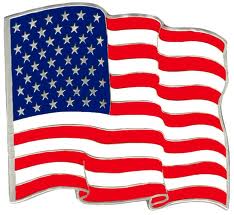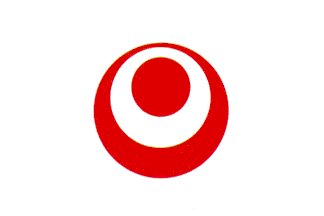|
|
SHORIN-RYU
KARATE CLUB
|
|
|
|
Kobudo is an Okinawan term that refers to Kobujutsu or, ancient weapon
art.
- In 1477, during the Second Sho Dynasty, swords and other weapons were
banned from Okinawa and the Ryukyu islands by Emperor Shoshin. All weapons
on the island were collected and garrisoned in his royal castle in Shuri on
Okinawa. It was as a direct result of Shoshin's edict that Okinawans turned
to the development of karate (open hand) fighting. Although kobudo
weapons are not really a part of karate, their development has shadowed the
development and evolution of karate to the degree that they are almost
inseparable.
- In 1600 the Japanese invaded and occupied Okinawa. As a conquering army
they used the continued prohibition of weapons as a method of controlling
the population. This was combined with an attitude by the Japanese, that
still permeates the island today, that Okinawans were second class citizens
and not as good as Japanese. (Even today most any Okinawan will quickly
inform you - "I am not Japanese, I am Okinawan!") Therefore only
Japanese samurai's were permitted to own and carry weapons
- Okinawan karate further developed from it's Chinese roots. Just as the
monks in china had developed weapons from seemingly innocent items such as
the staff, so to did the Okinawans. These creative farmers and fishers
resorted to weaponizing the implements of their everyday working life. They
developed complex weapons forms for such items as the boat oar (eku), fish
net floats (chesen kun bo), millstone handles (tonfa), top knot pints (jiwa)
sickles (kama), saddle stirrups (tekkos) and the 6 foot staff (bo).
- Over the years modern machinery and implements replaced most of the
traditional kobudo implements, however they remained an integral part of
kobujutsu.
With the growth and development of Shorin-Ryu Matsubayashi-Ryu karate
certain kobudo weapons have remained closely aligned to our system. These
weapons include the Bo, the Sai, the Tuifa, the Kama and the Nunchakus. By
adding weapons training to the traditional open-handed training, Grandmaster
Nagamine felt the individual student could enhance their mental and physical
training.
The Weapons of Kobudo Utilized in Shorin-Ryu

The Kama (comma) or hand sickle
Kama were one of the first weapons utilized by the Okinawans after the
confiscation of their other weapons. Kamas had long been used as a fighting
blade in addition to it's routine farm uses of cutting grass, rice and sugar
cane. The weapon could be utilized to cut, slice, block and for striking.
Another version of this weapon, the kusarigama, had a length of chain
attached to it to increase it's length. However, since chain was in short
supply on the primitive island and the addition of the chain made the kama
more clearly a weapon, it's use was limited.
In Shorin-Ryu the kama is used primarily in kata demonstration and
competitions. It is still used as a farm implement in Okinawa. The kamas
used in Shorin-ryu are traditional kamas and not the fancy, aerodynamic
titanium and aluminum varieties seen in flashy demonstrations at some
competitions.

The Bo (boh) or 6 foot staff
The Bo is another early weapon of Okinawa. It differed in that it was
utilized by peasants, monks and samurai alike. Fashioned of Okinawan
hardwood, the Bo is 6 feet long and 1 1/2 to 2 inches in diameter. Many
present day Bos taper at the ends. This is probably not the traditional
style as the bo was utilized to carry water buckets and other items. If the
original Bo was indeed tapered at the ends it would have been more difficult
to keep items on it. Because of this original Bos are felt to have been
non-tapered.
The Bo's size makes it a good weapon to use against swords and to
disarm an opponent while allowing the Bo practitioner to remain at a safer
distance. Manipulation of the weapon requires a thorough knowledge of basic
karate stances and techniques
Shorin-Ryu utilizes the Bo for demonstrations, kata and practical self
defense techniques. In day-to-day life many articles can be utilized as a
Bo-like weapon; a broom or mop stick, a pool stick, a PVC pipe or even an
umbrella. The Bo is also used to augment physical conditioning and balance.

The Tuifa (twee-fa) or grinder handles
Controversy surround the original use of the tuifa. It has been
referred to as a rice grinder although some evidence exists to support it's
use as a milestone handle. Either way it's use has also parrelled the
development of karate.
The tuifa are very effective weapons for striking and blocking. The
handle can be used to twirl the weapon thereby increasing it's reach. The
sides of the weapon are used primarily for blocking and the ends for
striking. Although generally used in pairs it is also an effective weapon
when used singularly. Good evidence of this is seen with the adaptation of
the Tuifa in a great number of police departments and correctional
facilities around the world.
In Shorin-Ryu the tuifa is used in black belt weapons katas and in
demonstrations

The Sai (sigh) or trident
The Sai are found in both Okinawan and other oriental martial arts
schools. Used in sets, the Sai are made of iron and weigh upwards of 3
pounds each. It can be used to block, stab, trap or strike. In Okinawa forms
developed where the Sai was thrown. When thrown, the practitioner would
frequently carry a third Sai in his belt to replace the thrown Sai. The
pummel on the Sai's handle could be used to block and to crush (i.e. skull).
A Sai could also be attached to a Bo to create a spear.
Originally the Sai was probably a farm implement along the lines of the
pitchfork. It was also carried by police to defend themselves against
swords. It has long been associated with the study of karate.
Modern day Sai's generally have dulled tips and are now used in kata
and demonstrations. Because of it's weight it is also utilized to develop
both strength and coordination

The Nunchaku (noon-chuck-uu) or rice flails
The Nunchaku was originally a tool for thrashing rice, wheat or other
grains. To the Japanese it appeared to be two harmless wooden sticks
connected with a length of rope, braided horse hair or chain.
The Nunchaku were utilized to strike, block and trap an opponent.
Stances utilized with the Nunchaku were the same as those utilized in karate
so, again, the development of the two closely parelled each other. Use of
the Nunchaku required the martial artist to be equally proficient with
either hand. During it's use the weapons could be switched from one hand to
the other as needed.
Most occidentals were introduced to the Nunchaku by Bruce Lee in the
1970s. Since that time the Nunchaku has been closely aligned to Okinawan and
Japanese karate. It can be a "flashy" weapons and because of this it is
frequently seen in Karate demonstrations. Many police departments carry
Nunchakus.
|
|
|
|
|
|
|
|
|
experience & leadership by example,
safety, honor, respect and humility |
|
|
|
Shorin ryu Karate Club
Experience & leadership by example, safety, honor,
respect and humility |
|
|
|
Shorin ryu Karate Club
Experience & leadership by example, safety, honor,
respect and humility |
|
|
|
2040 Cherry Valley
Rd. Newark, Ohio 43055
Phone: (740) 587-5250
Email:
Shorin-Ryu
Karate Club
Classes are Monday &
Wednesday 6:30-8:00 pm
Friday at 6:00-7:00 pm
Saturday classes
9:30-10:30 am
|
INSTRUCTORS |
Master A. Thomas |
Master T. Mulvey |
Master
A. Grove |
Sensei M. Smith |
Sensei M. Decker |
Sensei K. Hickman |
Sensei S. Hepner |
Sensei B. Sullivan |
Sensei T. Stewart |
|
|
|






